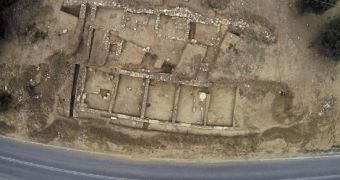Archaeologists carrying out excavations in Greece have announced that, while exploring the site of the ancient city of Argilor in the country's northern regions, they stumbled upon the remains of a shopping center.
Information shared with the public says that this ancient shopping mall is best described as a portico, i.e. a covered walkway made up of a roof supported by columns.
By the looks of it, it was built some 2,700 years ago. In those days, it housed seven individual shops, including a bakery and an olive oil shop.
“We have confirmed one of the shops as a bakery – we found a flour grinding stone as well as a kiln inside to bake. Another was an olive oil shop as it still had the olive press required to produce the product,” Professor Jacques Perreault told the press.
Archaeologists have reasons to believe that one of the shops was a drug store, i.e. a place where a chemist fabricated and sold medicine, but presently lack sufficient evidence to confirm this hypothesis.
Daily Mail tells us that this 2,700-year-old shopping mall measures about 40 meters (131 feet) in length. Each of the shops it used to house was roughly 5 meters (16.5 feet) wide, and had a 2.5 meter (82. feet) high wall at its back.
Due to the fact that each of the shops appears to have been made by different masons who used different construction techniques and construction materials, archaeologists suspect that the building of this portico was not commissioned by high officials in the city of Argilos, but by the merchants themselves.
“This indicates that the shop owners themselves were probably responsible for building the rooms, that 'private enterprise' and not the city was the source of this stoa,” Professor Jacques Perreault explained.
Apparently, the portico found at the site of the city of Agilos is the oldest construction of its kind to have thus far been unearthed in northern Greece.
“We had no idea something so historically important would be lying here,” Jacques Perreault commented on this discovery. “It is incredibly exciting and we believe there still so much more to find,” he added.

 14 DAY TRIAL //
14 DAY TRIAL //